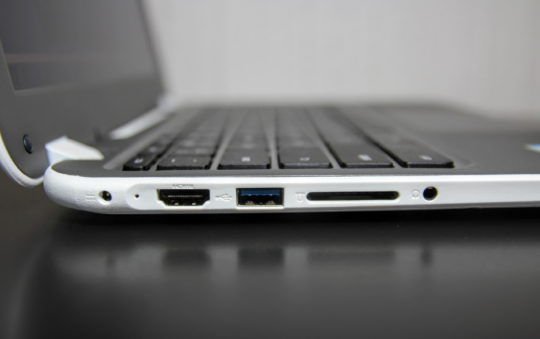In Windows XP networking, TCP/IP is the preferred protocol. It’s automatically installed, can’t be un-installed, and is used by default for all networking functions. This reflects the state of networking in the 21st century. With the widespread use of the Internet, which uses TCP/IP, other network protocols are fading away everywhere.
Windows XP provides one other supported protocol — IPX/SPX — and one unsupported protocol, NetBEUI. Unusual protocols that have been included in earlier versions of Windows (Banyan Vines, DLC, etc) are no longer available.
If you’re setting up a new network that includes XP, TCP/IP is almost certainly the only protocol to use. If you have an existing network that uses IPX/SPX or NetBEUI, we’ll show you how you can continue to use that protocol in XP.
To see the network components, including protocols, which are associated with a network connection, open the Network Connections folder, right click, the connection, and select Properties.
Here are the components that XP installs by default:
To see the settings for a particular protocol, click the protocol and then click Properties.
TCP/IP
By default, XP configures TCP/IP to obtain an IP address automatically. If there’s a DHCP server on the network, it will assign the IP address and other TCP/IP settings to the connection. Otherwise, Windows XP will use Automatic Private IP Addressing to assign an IP address to the connection.
This default configuration should work, unchanged, to connect a Windows XP computer to a network that uses TCP/IP for File and Printer Sharing in these common configurations:
- One computer on the network is running Internet sharing software, such as Internet Connection Sharing, and provides a DHCP server for assigning TCP/IP settings to the other computers.
- A hardware router provides shared Internet access and a DHCP server.
- All computers run either Windows 98, 98SE, Me, 2000, or XP, with no DHCP server. The computers can use Automatic Private IP Addressing to assign themselves compatible IP addresses.
Using an Internet sharing program or a hardware router protects the local area network from access by other Internet users, so it’s safe to use TCP/IP for File and Printer Sharing on the LAN. The computers have private IP addresses that aren’t accessible from the Internet. No other protocol is needed.
If your network uses static IP addresses, click Use the following IP address and enter the configuration information. For example, here are possible settings for a network that uses a proxy server at IP address 192.168.1.1 for Internet access.
IPX/SPX
If the existing network uses IPX/SPX for File and Printer Sharing, you can add that protocol to the Windows XP computer. IPX/SPX is fully supported in XP. In the connection’s Properties, click the Install button to add a network component. XP will ask what type of network component to install.
Click Protocol and Add.
Click NWLink IPX/SPX/NetBIOS Compatible Transport Protocol and click OK. Two NWLink items are added to the connection’s Properties
NetBEUI
NetBEUI was the default protocol in Windows 95, but Microsoft has been moving away from NetBEUI ever since. Starting with Windows 98, TCP/IP has been the default protocol, and NetBEUI has been available for installation as a supported protocol.
Starting with Windows XP, NetBEUI is unsupported. This doesn’t mean that NetBEUI won’t work! It means that:
- Microsoft recommends against using it.
- It doesn’t appear in the list of protocols that can be installed.
- Microsoft’s technical support staff won’t answer questions about NetBEUI or help solve problems with it.
Because it’s been around for so long, some people think that NetBEUI is required, and they install it on all Windows networks. Actually, nothing in Windows networking has ever required NetBEUI. You can even un-install NetBEUI in Windows 95 and use a different protocol.
If your existing network uses NetBEUI for File and Printer Sharing, consider changing to a different protocol. Most networks can safely use TCP/IP. The main exceptions to this rule are when:
- All of the networked computers are connected directly to a cable or DSL modem and receive public IP addresses from an Internet service provider.
- You’ve separated your LAN from the Internet, but you’ve opened ports or have placed a computer outside the firewall to use certain applications or services.
For more information, read Sections 1-3 of our article on Securing Your LAN. If that article says that you need NetBEUI, consider using IPX/SPX instead – even the gang here at PracticallyNetworked has promoted NetBEUI in the past.
If, after considering all of the options, you decide to install NetBEUI on Windows XP, follow the instructions in this Microsoft Knowledge Base article. If the Welcome to Microsoft Windows XP screen appears when you insert the CD-ROM, click Perform additional tasks followed by Browse this CD.
If you have more than one local area network connection, this procedure will install NetBEUI on all of them. It isn’t possible to install NetBEUI on a dial-up connection
You can un-bind NetBEUI from a LAN connection by opening the connection’s Properties screen and un-checking the NetBEUI Protocol box.
If you have a new computer that didn’t come with a Windows XP CD-ROM, see if the computer manufacturer will send you the CD-ROM or the necessary NetBEUI files. If that isn’t possible, you’ll have to use a different protocol on your network.
If you need them, here are instructions on implementing NetBEUI in Windows 2000.
Un-Binding a Protocol
By default, Windows XP binds an installed protocol to each network connection and service. You can remove the binding, preventing that service from using that protocol.
Open the Network Connections folder and click Advanced followed by Advanced Settings.
To see the bindings for a connection, click the connection name under Connections. The bindings appear under Bindings.
To remove a binding, un-check the corresponding box. For example, to use IPX/SPX instead of TCP/IP for file sharing, un-bind TCP/IP from both File and Printer Sharing and Client for Microsoft Networks.
| Adding Windows XP Home Edition to an Exisiting Network | |
| Simple File Sharing | |
| Internet Connection Firewall | |
| WinXP Networking Protocols |















